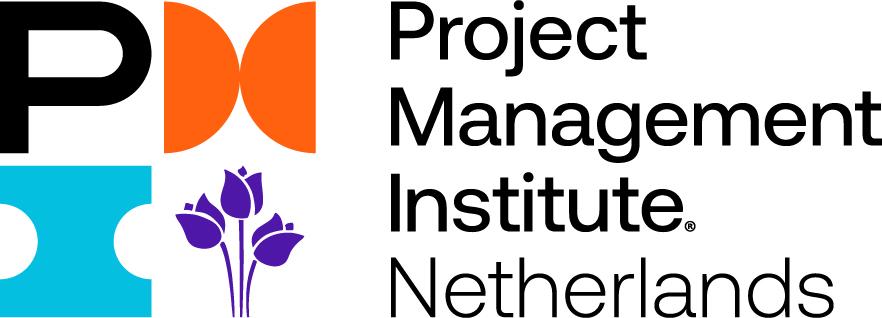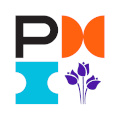April 29 2025 at 07:28AM
Voices of Our Partners: Team Culture & Ways of Working: The Human Side of Methodologies
In our project management world, we are constantly confronted with frameworks, standards, and methodologies. Like the PMBOK Guide, PRINCE2, Scrum, DevOps, and Kanban, you may easily get drowned in these, especially when a mixture of these are combined simultaneously, as we see everywhere in practice. Not only using different terminology for more or less the same things but also different models behind it, with different assumptions underneath. Thus, conflicting views may be created, which may lead to “methodology” becoming more of a burden than a support. But beneath every methodology is the most important component: People! And that’s where Leadership comes in!
Self-leadership and Team leadership!
Methodologies support us in how we work, but culture determines what works well in practice. It's the unspoken agreement of behavior, the lens through which teams interpret and use structures and the vibe that either fuels collaboration or decreases motivation. Below, we´ll explore the crucial but often under-emphasized interplay between “Culture” and “Ways of Working”, why the human side of methodologies matters, what it looks like in practice, and how leaders and team members alike can foster healthier, high-performing cultures.
Why Methodologies Alone Aren’t Enough
Frameworks and methodologies provide scaffolding: shared references and practical structures for organizing our team work, to reduce uncertainty and avoid chaos, for improving delivery. The PMBOK Guide, for instance, defines explicit project Performance domains and PM processes that a team and the PM should manage. Agile promotes iterative development in short cycles, frequent feedback and incremental delivery. Scrum offers Roles, Ceremonies or Events, and Artifacts to guide progress. DevOps merges software development with IT operations for faster, more reliable delivery.
But here’s the catch: even the most robust methodology will fail without the right mindset and team dynamics.
- A team might adopt a methodology that assumes a self-organizing approach and still fall into command-and-control behavior.
- You can have retrospectives on the calendar but not psychological safety in the room.
- You might implement a nicely designed workflow but ignore underlying communication breakdowns.
"Culture Also Eats Methodology for Breakfast"
You may recognize this phrase in the context of strategy realization, emphasizing the importance of organizational culture over strategic planning. But there´s more to culture's breakfast table, and Methodologies is definitely one of them. It's not that methodologies don't work. It's that their success depends heavily on how they are lived in practice, and not just followed by the book or sometimes simply ignored when people find it inconvenient. And how they're lived depends on the human fabric of the team, which we call “Culture”.
Culture is sometimes seen as “soft” or intangible, but it’s incredibly real and powerful. Think of culture as a team’s internal DNA. It’s the invisible layer that guides decision-making, behavior, and collaboration. Culture doesn’t replace methodologies; it amplifies them. A healthy team can make almost any immature methodology work for them, while at the same time an unhealthy team will struggle with even the most proven frameworks.
So, how can teams bridge the gap between methodologies and the human side of work? Here are some practical strategies:
🧩 1. Co-create a team charter where proactively some basic rules and expected behaviors, defined as SMART, are agreed upon.
👂 2. Prioritize and organize Retrospectives / Lessons Learned; deliberately separate the evaluation of “technical” content from the Way of Working as a team.
🔍 3. Observe the “Invisible” Signals: Look beyond “hard” delivery metrics and pay attention to body language in meetings, the tone of async messages, or the hesitations in difficult conversations. This is where the Emotional Intelligence of the leader in each team member comes in.
🔄 4. Reinforce Desired Behaviors: Culture is shaped by what gets rewarded. Celebrate moments when people live the values.
🎓 5. Invest in Power Skills: Collaborative Leadership, Communication, Problem Solving, Strategic thinking, to name a few . These are the skills that unlock high-performing teams. There is a free self-assessment on PMI’s website https://www.pmi.org/learning/thought-leadership/power-skills/power-skills-assessment. Try it out to understand your and your collective team’s capabilities.
New Challenges, Change of Culture
With the nowadays more common shift to remote and hybrid teams, culture has become even harder to feel, but therefore no less important. In fact, distributed teams need intentional culture-building more than ever! Here are some adaptations that help:
- Design for connection: Make time for informal chat, coffee calls, or team rituals.
- Communicate with empathy: Written words lack tone of voice; choose yours with care.
- Clarify assumptions: Don’t rely on hallway conversations. Be explicit about expectations, roles, and ways of working.
- Use async tools wisely: With nowadays avalanche of tools and apps, “Toolmania” can destroy smooth team work; for every process another tool, everyone using their own favorites at will, limit and agree on which tools are used for what.
But Most Importantly, Make Culture Tangible!
There are many models to describe and measure “Culture”, but they all share key human factors that profoundly influence team culture, like psychological safety, trust, communication styles, the way how conflicts are resolved, belonging and inclusion, leadership behavior, and more.
You've often heard, "What gets measured gets managed". And that’s true! If you don't know what your culture is like, what type of culture you desire, and what type of culture you need in the context of your strategy, then any culture can evolve positively or negatively. Cultural qualities like openness, trust, and inclusiveness can be defined as subjective and may be perceived differently by each employee, making it hard to capture a single objective measure. Measuring culture is, therefore, difficult because, unlike concrete metrics such as sales figures or production output, culture needs other metrics. But it’s not impossible!
Conclusion
At the end of the day, the methodologies we use are only as effective as the people using them. You can't engineer great outcomes with the process alone. You need a Culture where:
- Teams trust each other.
- Leaders listen and empower.
- Feedback is encouraged for learning and growth
- And more…
So next time you are designing a workflow, launching a transformation, or adopting a new tool, pause. Ask yourself: “How are we supporting the human side of this change?”
Because when we get the culture, the people part right, everything else follows.
Final Thought: Culture Is Everyone’s Job
Creating a strong team culture isn’t just the PM’s or HR’s job. It’s everyone’s job; every interaction, every behavior, every moment of care or disregard contributes to the collective atmosphere. So speak up, be kind, also dare to ask the hard questions, and celebrate the wins. And remember that Methodologies may give you the map, but culture determines whether you’ll enjoy the ride!
In case you want to learn more about measuring your organizational culture, just send a message to info@threon.com or check threon’s website.
Follow our News



